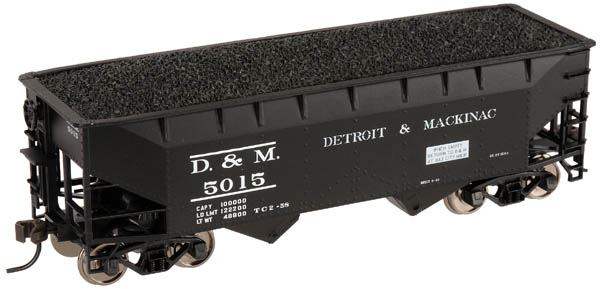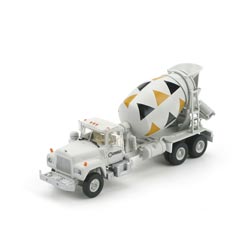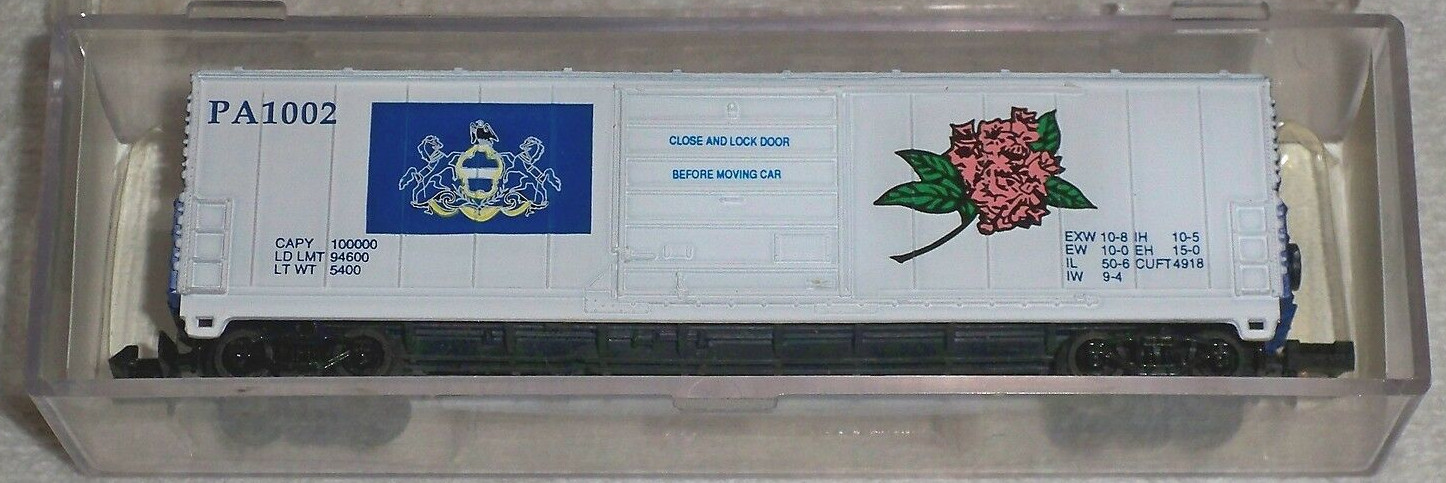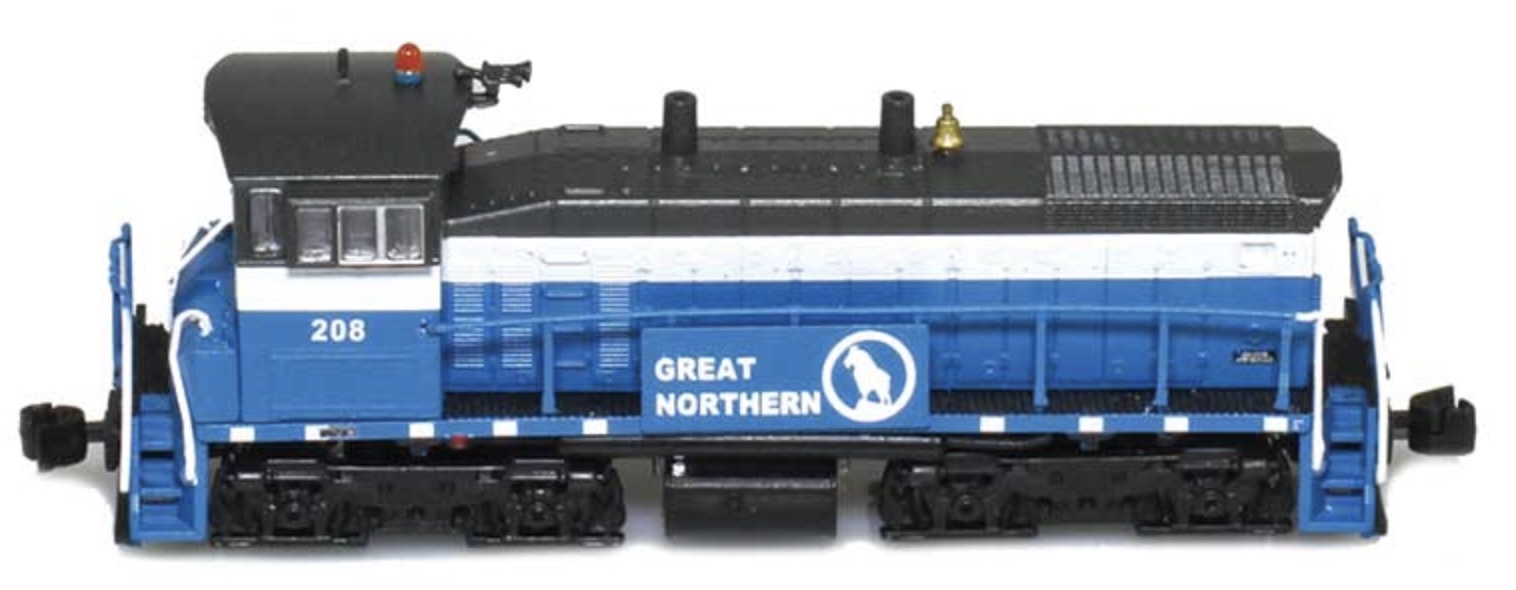Prototype Information: The late 1920s saw the introduction of the AAR standard “offset-side” 50- and 70-ton hoppers. The design went through several variations in the late 1920s and early 1930s before settling on two versions of the 50-ton car and one 3-bay, 70-ton car in 1935. Most roads went for the AAR standard designs, but the N&W, VGN, and Pennsy were notable holdouts. World War II brought the famous “war emergency” hoppers (only the N&W and MP bought the 70-ton version) and several composite versions of existing designs. After the war, AC&F found some brief success with a welded outside-stake hopper design, but the weld joints broke under the stress of loading and unloading rather than flexing like riveted joints. The offset-side design also had problems: the inside stakes were more prone to corrosion, and they suffered worse from loading and unloading stress than outside-staked hoppers. The design waned in the 1950s and was all but abandoned for new cars by 1960. Some roads (notably the C&O, the B&O, and the L&N) made the best of a bad situation by rebuilding their offset-side cars with all new outside-staked sides in the late 1950s and early 1960s.
Road/Company Information: 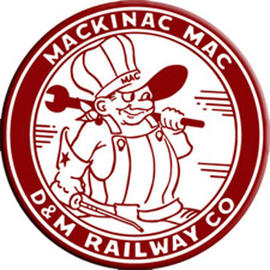 First of all, Mackinac is pronounced “MACKinaw.” The Mackinac region is where Lake Superior and Lake Huron meet. Some towns in the region spell it with a W but not the D&M.
First of all, Mackinac is pronounced “MACKinaw.” The Mackinac region is where Lake Superior and Lake Huron meet. Some towns in the region spell it with a W but not the D&M.
The D&M was established in 1894 as part of the reorganization of the Detroit Bay City & Alpena Railroad. The D&M ran from Cheboygan to Bay City and La Rocque plus branches, all in Michigan’s lower peninsula. The total mileage was 348, making it nearly as big as cross-lake neighbor Duluth Missabe & Iron Range. D&M had picked up some former Penn Central lines excluded from Conrail but service ended in 1990 on those routes. Traffic was primarily forest products and aggregates. In addition to connections on the southern end of the D&M, they interchanged with the Duluth South Shore & Atlantic (later SOO) on the Upper Peninsula via car ferry from Bay City across the Straights of Mackinac.
D&M’s diesel roster (around 12 units) was almost entirely Alco. They also had about 1200 freight cars. Their logo had a cartoon of an engineer named Mackinac Mac holding a wrench. The Detroit & Mackinac flag fell in 1992 when the owners sold it to a new railroad, Lake State Railway.

The D&M was established in 1894 as part of the reorganization of the Detroit Bay City & Alpena Railroad. The D&M ran from Cheboygan to Bay City and La Rocque plus branches, all in Michigan’s lower peninsula. The total mileage was 348, making it nearly as big as cross-lake neighbor Duluth Missabe & Iron Range. D&M had picked up some former Penn Central lines excluded from Conrail but service ended in 1990 on those routes. Traffic was primarily forest products and aggregates. In addition to connections on the southern end of the D&M, they interchanged with the Duluth South Shore & Atlantic (later SOO) on the Upper Peninsula via car ferry from Bay City across the Straights of Mackinac.
D&M’s diesel roster (around 12 units) was almost entirely Alco. They also had about 1200 freight cars. Their logo had a cartoon of an engineer named Mackinac Mac holding a wrench. The Detroit & Mackinac flag fell in 1992 when the owners sold it to a new railroad, Lake State Railway.
Brand/Importer Information: In 1924 Stephan Schaffan, Sr. founded the Atlas Tool Company in Newark, New Jersey. In 1933 his son, Stephan Schaffan, Jr., came to work for his father at the age of sixteen. Steve Jr. built model airplanes as a hobby and frequented a local hobby shop. Being an enterprising young man, he would often ask the owner if there was anything he could do to earn some extra spending money. Tired of listening to his requests, the hobby-store owner threw some model railroad track parts his way and said, "Here, see if you can improve on this".
Atlas has made a ton of wonderful products throughout the years and we often get questions one whether we have run a certain road name on a particular model. It should be noted that Atlas locomotives and rolling stock are greatly appreciated for their superior operating and running characteristics. Atlas products are also well known for their outstanding collectability not only due to their superior prototypical workmanship, details and decoration, but because there are relatively so few of them made. Each and every production run has been carefully built to market demand, meaning almost every piece in any given run is sold out by Atlas on arrival or shortly thereafter, thus creating a built in collectors market.
Atlas has made a ton of wonderful products throughout the years and we often get questions one whether we have run a certain road name on a particular model. It should be noted that Atlas locomotives and rolling stock are greatly appreciated for their superior operating and running characteristics. Atlas products are also well known for their outstanding collectability not only due to their superior prototypical workmanship, details and decoration, but because there are relatively so few of them made. Each and every production run has been carefully built to market demand, meaning almost every piece in any given run is sold out by Atlas on arrival or shortly thereafter, thus creating a built in collectors market.
Item created by: devsummers428 on 2019-09-03 16:12:11. Last edited by Alain LM on 2020-05-07 00:00:00
If you see errors or missing data in this entry, please feel free to log in and edit it. Anyone with a Gmail account can log in instantly.
If you see errors or missing data in this entry, please feel free to log in and edit it. Anyone with a Gmail account can log in instantly.


